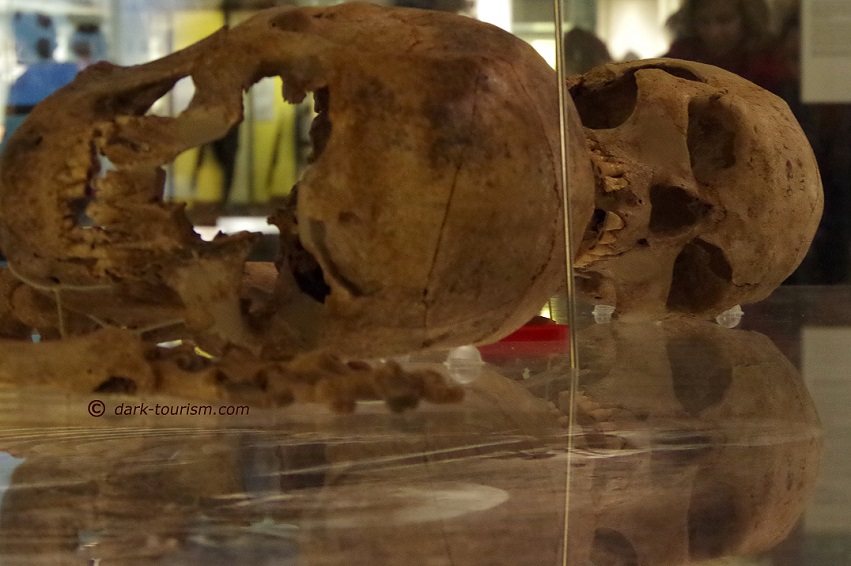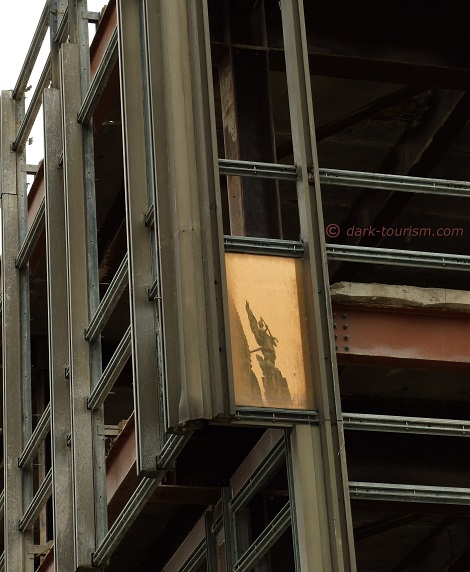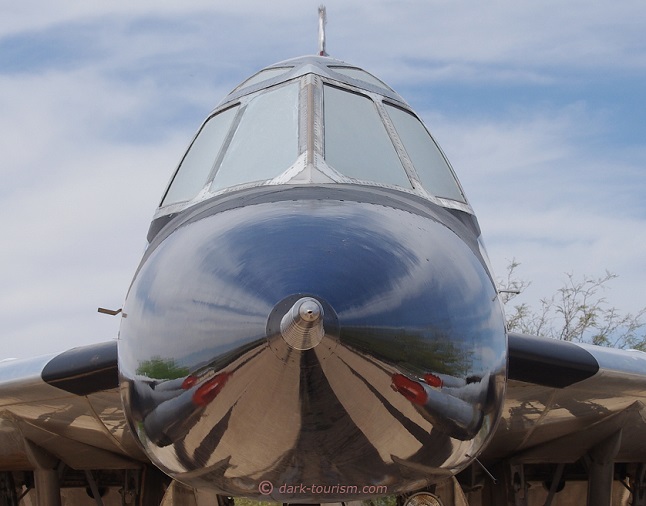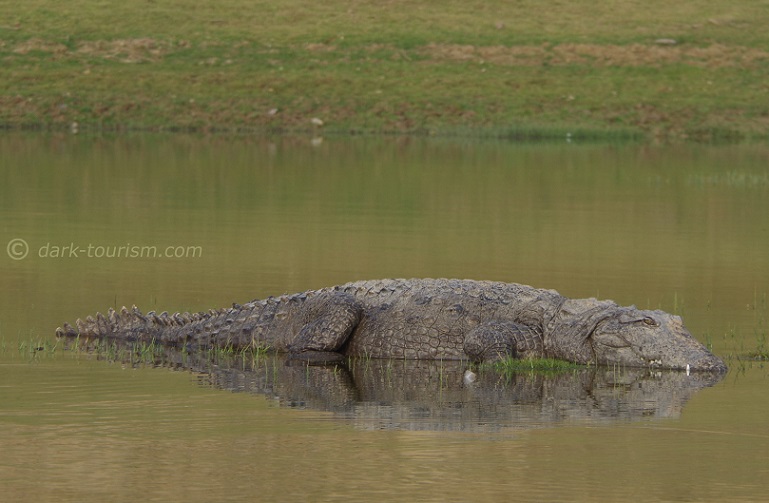And here comes the third of the four themes of our most recent poll (which didn’t have a winner, hence all four are fielded). So now for reflections – and I mean that literally, mostly, though a little bit of reflecting in the figurative sense will also feature. But this is primarily a visual blog post.
I like photographing reflections! I’m always on the lookout for reflections wherever I travel. Hence I have loads of such photos that accumulated over the years. So the 25 photos in this blog post are in fact a very selective small choice.
My fondness of reflective photography, however, can sometimes lead to puzzled looks. I remember well some people literally shaking their heads in disbelief when I photographed a reflection of the harbour front on a modern glass facade in Baku, Azerbaijan. This is one of the results:

But the puzzlement this caused on the part of the local passers-by stems more from the fact that it would never even occur to an Azerbaijani to point a camera at anything other than smiling, posing people (preferably themselves).
Similarly, my father-in-law on seeing the following photo dismissively commented: “Oh, is this one of them arty-farty photos?”

This was taken in Lower Manhattan through some street art installation and shows the reflection of an older skyscraper on the glass facade of a modern one.
But so much for intro, now to proper dark tourism. Here’s a reflective photo from one of the destinations that are widely regarded as the “Big 5” of dark tourism, Choeung Ek (the other four being Auschwitz, Chernobyl, Hiroshima and the 9/11 Memorial in New York):

These skulls, reflected on the glass they sit on, are a couple of many hundreds on display in a stupa at Choeung Ek near the Cambodian capital Phnom Penh. It is often referred to as “the killing fields”, but it is in fact only one of hundreds of killing fields that were filled with dead bodies during the Cambodian (auto-)genocide in the 1970s. But Choeung Ek is the one that’s most commodified for tourism and has in fact become one of the “must-sees” in Phnom Penh (although most Cambodia tourists only ever stay in Siem Reap to see Angkor Wat).
And here’s another couple of reflected skulls, but these were photographed at the British Museum in London (and I can’t recall what their archaeological significance was):

The next photo was taken at another one of the “Big 5”, namely at Auschwitz, more precisely at Auschwitz-Birkenau:

I found this wall of photos very effective – from a distance, as seen here, it’s just an anonymous mass, doubled by the reflection, but step up closer and you see individuals at various family occasions, many smiling, living their lives. This way the over a million victims of this camp are given back an echo of their individual personalities that they were robbed of at Auschwitz.
The next photo was taken at a place that featured on this blog not long ago, namely the former GDR border checkpoint Marienborn, seen here partly as a reflection, partly as backdrop:

I applied an electronic filter effect to this photo, namely colour extraction, which I set to red. That way only the rusty frame of this mirror appears in colour, while the rest is in black and white.
The next photo is in natural, non-manipulated colour and shows a reflection of an angel statue (that looks like it’s playing an electric guitar) on the Berlin Cathedral:

What makes this somewhat dark is not the reflection as such, though, but what it was reflected in, namely the Palast der Republik (‘Palace of the Republic’), the former parliament of the GDR, which also doubled up as an event centre for concerts. After the reunification of Germany and the demise of the GDR, the building was declared full of asbestos that allegedly could not be removed (the political will to attempt this was clearly not there), and so it was decided to demolish the whole pile, which began in 2006. I suspect, though, that it had more to do with architectural revisionism. The space is now covered by the controversial new replica of the former Prussian City Palace (see this critical article about it).
When I was in Berlin in 2008 the demolition (euphemistically referred to as “Rückbau”, or ‘reverse construction’) was in full swing, but on one corner there was still one of the iconic copper-coloured mirror glass panes on what was left of the facade, which was once completely covered by them (and that was actually quite a stunning sight). Here’s another shot of the same place but zoomed out to show the loneliness of the last window pane still in place back then:

The next photo has featured on this blog before, namely on 4th of July, and it shows a reflection of the famous Chrysler Building in New York reflected in the modern glass facade of a building opposite it – plus a stars-and-stripes flag flying at the top. I like this photo a lot, so I reckoned I could use it again in this context:

Another reflection photo taken in the USA that I’m quite fond of is this one, taken at the Vietnam Vets Memorial on the Mall in Washington D.C.:

What I like here in addition to the reflection of various trees is the few plant sprigs growing from a crack between two of the memorial’s black marble panels – life finding its way into existence on a monument to the dead. I think that’s quite uplifting.
Staying in the US, here’s another cool reflection photo. It was taken at the Greenbrier Hotel in West Virginia:

This photo has also featured on this blog before, namely in the themed post “dark tourism & pianos”. What I like about this photo in particular is the near perfect symmetry of both the interiors and their reflection on the polished tiled floor. The Greenbrier is, however, not a dark-tourism destination for its lavish (and often even garish) interiors, but for the formerly secret nuclear bunker that was built for the US Congress between 1958 and 1961 underneath a new wing. Its existence was revealed to the public in 1992 and not long after that it was decommissioned and became a visitor attraction.
And here’s another photo that has dark associations simply for where it is:

This is another glass facade and reflected in it is the new One World Trade Center Tower at what was Ground Zero, where its predecessor Twin Towers were destroyed in the 9/11 terrorist attacks. The area is now also home to the vast National 9/11 Memorial & Museum, another one of those “Big 5” of dark tourism (see above).
Jumping back to Europe, this is a reflection of one of the brutalist buildings (the central post office) in North Macedonia’s capital Skopje:

Here, the dark connection is the reason why such modernist buildings came about, namely as replacements for the many buildings destroyed in the devastating earthquake of 26 July 1963. The city was rebuilt with much input by Japanese star architect Kenzo Tange. But these days this brutalist style has fallen out of favour with the city planners and government, and so some of the iconic concrete facades have been covered up and faux classicist plaster friezes and columns were added in a completely misguided attempt at “beautification”.
Next up is perhaps the weirdest of all the reflection photos in this post:

This was taken in Kazakhstan’s capital city, then still called Astana, now renamed Nur-Sultan (after former President Nazarbayev’s first name). This photo shows a reflection of the top of a neighbouring building in a glass facade that is clearly curved, so that the perfectly straight golden needle at the top of the reflected building gets distorted into this shape like the letter <s> (give it a double diagonal strike-through and you get the Dollar symbol!).
Now taking off into the skies, here’s a photo of a reflection that could give the term ‘wing mirror’ a whole new meaning. This was photographed through a window of a seaplane I was on in Sri Lanka in 2007 and shows a little mirror on the underside of the plane’s wing:

And here comes another plane reflection – this time on the nose of a B-58 Hustler supersonic bomber on display at the Pima Air & Space Museum in Tucson, Arizona:

I like the way in which the plane’s four jet engines (with red air-intake covers) are reflected in the polished aircraft nose. It’s kind of “self-reflective”.
Animal photography can sometimes also involve reflections, and here is an example:

This was taken from a boat on a Chambal River safari in India a few years ago. This creature is a mugger crocodile – and they can be dangerous. A tourist was killed by one later that year. Mugger crocs look rather scary as it is, and the reflection kind-of doubles that. (The photo featured on this blog before too, namely in the themed post “dark tourism & animals”)
A much more harmless-looking animal is this flamingo, perfectly doubled by its reflection in the water:

There is nothing dark or dangerous about flamingos, of course, and the only darkish association here is that this photo was taken at a salt lagoon in the Atacama, the world’s driest desert, in Chile, South America.
The next one was taken not all that far away across the border in Bolivia, namely at the Salar de Uyuni, the world’s largest salt pan. At the time I was there it was covered with a thin layer of water from recent rains, which turned the salt pan into the world’s largest mirror, as it were:

This photo was taken with a super-zoom bridge camera at a magnification of ca. 35x, hence the blur. (A similar photo has featured on this blog before, namely in the post “dark tourism & lakes”.). Uyuni presented scores of wonderful photo ops, many involving reflections, but out of the dozens of other such photos in my archive I’ve picked just one more here, to show a whole mountain landscape reflected in Uyuni:

Returning to buildings, here’s an upside-down image of the unfinished reactor block 5, complete with old rusting construction cranes, at the Chernobyl NPP, reflected in the flooded foundations of what was supposed to become the block’s turbine hall:

Since reflections in bodies of water appear upside down, I sometimes turn photos of such reflections around by 180 degrees, so that the reflection is the right way round but the original is upside down, as in this image of the famous Taj Mahal mausoleum in Agra, India:

And when the reflection isn’t perfect because the water isn’t quite still, you can get stunning effects if you cut away the original of what’s being reflected and, again, turn the image by 180 degrees, as in this photo (same as the featured photo at the top of this post):

I guess this big statue is so iconic and well known that most of my readers will have instantly identified this as the “Rodina Mat”, or ‘The Motherland Calls’ statue on Mamayev Hill in Volgograd, the former Stalingrad, Russia.
The next photo is another example of the same technique, but the object reflected is perhaps less well known:

This is a reflection of the central Flower monument at the concentration camp memorial of Jasenovac in Croatia.
And to finish this post, here’s a bit of self-reflection, a kind of selfie if you wish, showing myself reflected in a broken mirror in a former barbershop in the ghost town of Pripyat in the Chernobyl Exclusion Zone, taken when I was last there in mid-November 2018, hence the coat, woolly hat and gloves:

And with this 25th photo of this post I will bring it to a close. The final instalment of this series of themed posts from the recent poll will be “Dark Tourism & Nuclear Power Stations”. Next week.




4 responses
Great photos! I was in that barbershop as well but found it very difficult to get a photo without me in it!
I’m looking forward to getting your book – initially amazon japan indicated I could get it in early October based off the initial release date, but now they are like, uh… please wait until early November. Not that long to go now!
Thanks, I’m quite fond of many of these photos myself. I did manage to get a few photos of that mirror without anybody reflected in it. I’ll send you one. Enjoy the book when you finally get it. I’m sure you’ll like many of the photos in that too. It is quite visual overall.
Wow, die Fotos sind genial!
Danke!